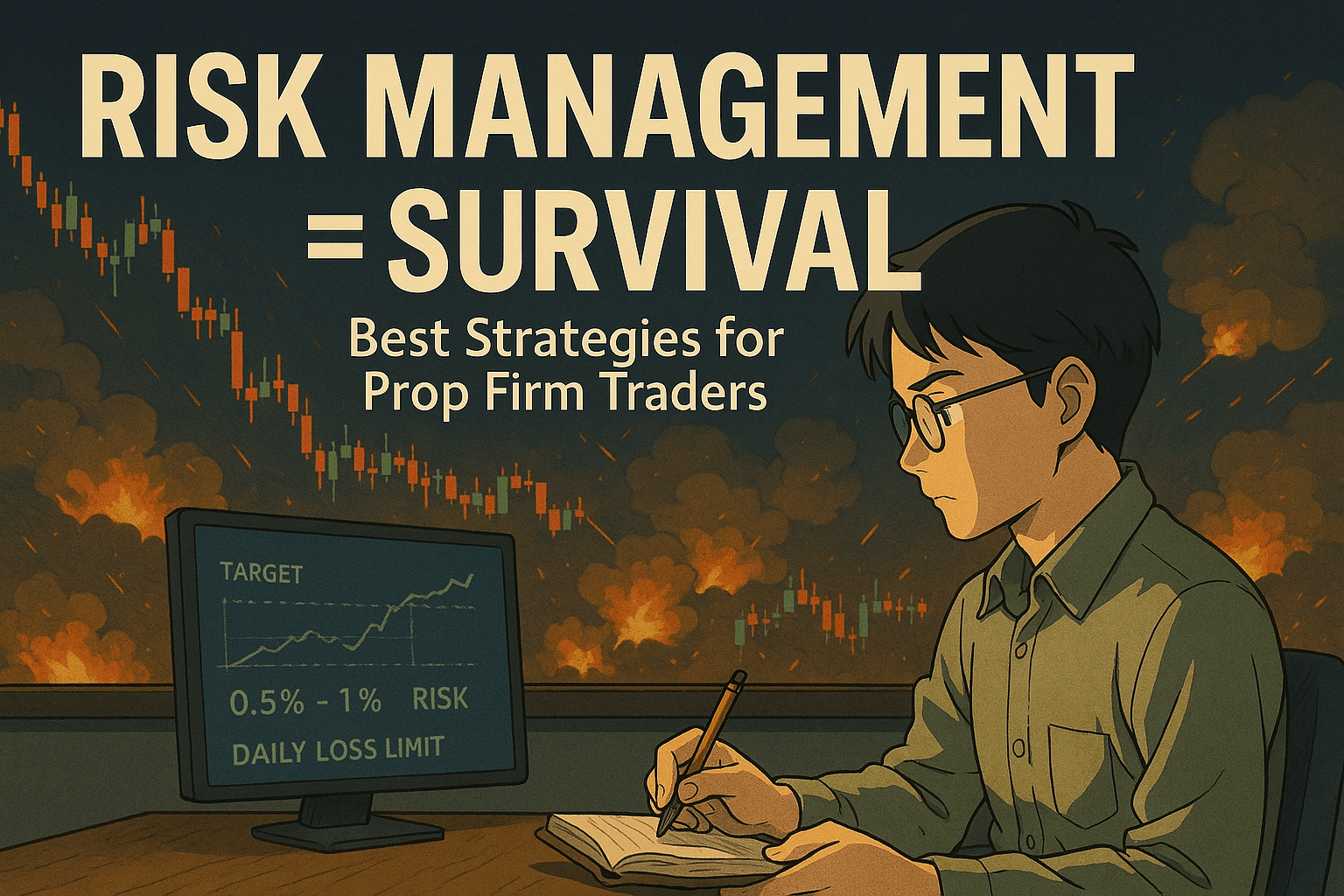
Best Risk Management Strategies for Prop Firm Challenges
Risk management is what separates funded traders from blown accounts. Here are the risk rules you need to follow to pass any prop firm challenge.
Help your fellow traders — share this post 🔁
Get Funded By CTI
Trade with real capital using City Traders Imperium programs.
Introduction
Risk management isn’t the sexy part of trading.
But it's what separates consistently funded traders from those who blow up their challenges in the first week.
If you're serious about getting funded by a prop firm, risk control isn't optional — it's your main weapon.
We’ve already discussed how mindset plays a huge role in your success — especially lessons from Peter Brandt's approach to prop firm trading.
Here are the best risk management strategies every trader should follow during prop firm evaluations.
1. Keep Risk Per Trade Between 0.5% to 1%
Most prop firm challenges have a strict daily drawdown — usually around 5%.
That means risking 2% or 3% per trade is a fast track to disaster.
The sweet spot:
- Risk 0.5% to 1% per trade
- Be ultra-selective with your setups
- Focus on surviving the challenge phase first
“Your job is to stay in the game long enough for your edge to work.” — Peter Brandt
2. Respect the Daily Drawdown Rule
This is the #1 reason traders fail evaluations.
In fact, it’s one of the biggest mistakes we’ve covered in detail in our post: 5 Mistakes That Cause Traders to Fail Prop Firm Challenges
Practical tips:
- Know your daily loss limit before entering trades
- Use hard stops + alerts to protect yourself
- Stop trading for the day if you're down 3% or more
Prop firms love risk-aware traders. Reckless gamblers don’t last long.
3. Adjust Lot Size Based on Account Phase
Are you in Phase 1 or Phase 2?
Treat them differently.
- Phase 1: Play defense. Smaller lot sizes. Focus on staying alive.
- Phase 2: Scale up slightly if your strategy has proven consistency.
- Funded Stage: Go back to conservative lot sizing to protect your capital.
Most traders get aggressive too early — and lose funding before the payout.
4. Avoid Trading During High Impact News (Unless Allowed)
News spikes can ruin your risk management plan.
Unless your prop firm specifically allows trading news (like CTI), avoid trading right before or during major economic releases.
Check:
- Forex Factory
- Trading Economics
- Your prop firm rules
Remember: prop firms want consistency — not gambling on news volatility.
5. Scale Up Slowly — Not Emotionally
Scaling should be earned, not emotional.
Once you’ve passed your challenge and withdrawn profits at least once, then — and only then — consider slowly increasing your lot sizes.
Scaling too fast = fast account death.
Bonus: Peter Brandt’s Risk Rule
Peter Brandt famously said:
“Risk control is the ultimate edge.”
If you want a deeper look into Peter Brandt’s trading wisdom, check out: What Peter Brandt Can Teach You About Passing Prop Firm Challenges
It's not your indicator.
It’s not your trading style.
It’s your ability to control risk under pressure that makes you a real trader — especially in a prop firm environment.
Final Thoughts
Passing a prop firm challenge is less about winning big — and more about losing small.
If you want to get funded (and stay funded), your risk management needs to be:
- Precise
- Boring
- Disciplined
- Relentless
💡 Ready to test your risk management skills? Compare the best prop firms here or read our full reviews.
Why Choose WMT?
Trade with no time limits, high leverage & up to 90% profit split.
Related Articles

7 Daily Habits of Funded Prop Traders (That Actually Work)
Learn 7 proven habits that help funded traders succeed in prop firm challenges & live accounts.

How to Pass a Prop Firm Challenge Without Blowing Your Account
Learn proven strategies and risk management techniques to successfully pass prop firm evaluations and secure your funded account.

How to Stay Motivated After Failing a Prop Firm Challenge
Many traders fail their first few challenges. This post will provide strategies to bounce back stronger and keep pushing forward.